
ESG goals achieved. Investing smartly in existing buildings.

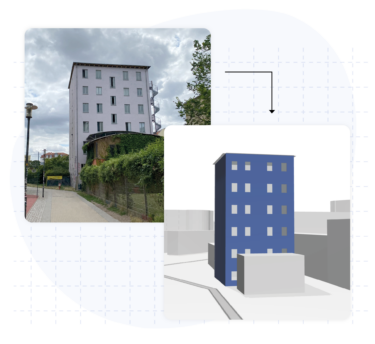
The intelligent digital twin. With a clear focus on ESG analyses.
In the digital twin, ESG-relevant building information is stored and updated – directly in the 3D model. This way, you do not lose any data and maintain an overview at all times.
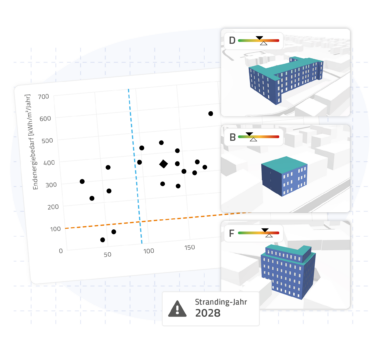
Determine the current energy status of your real estate quickly and easily.
The detailed look at your buildings. In this analysis, primary energy demand, final energy demand, CO₂ emissions, stranding times and comfort parameters are determined by means of simulations.
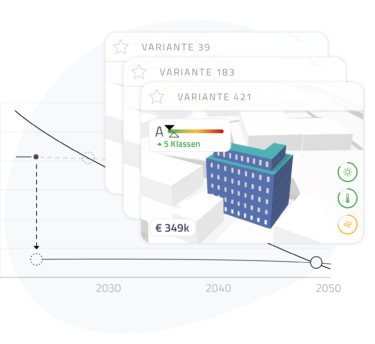
Get the most cost-effective refurbishment measures.
Metabuild is the only provider in the world that can automatically generate and holistically evaluate refurbishment variants.
The results show the most sensible renovation measures and their influence on energy demand, CO₂ emissions, stranding times and comfort parameters. Including cost calculation according to DIN 276 and DIN 18960.
Let’s talk about your portfolio.
Phone: +49 30 692 00 14 11
E-mail: info@metabuild.de
Or write to us via our contact form:
We know the reality in existing buildings: insufficient data on buildings and energy consumption. We have a solution for this.

Insights into the Metabuild platform
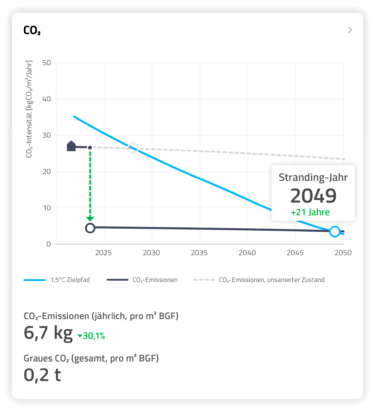
CRREM – stranding year in terms of final energy and CO₂
- Reliable prediction of stranding events
- Consideration of CRREM decarbonization pathways for CO₂ and final energy
- The stranding year shift is shown for remediation variants
Metabuild is an official partner of CRREM and analyzes real estate portfolios according to current CRREM methodology.

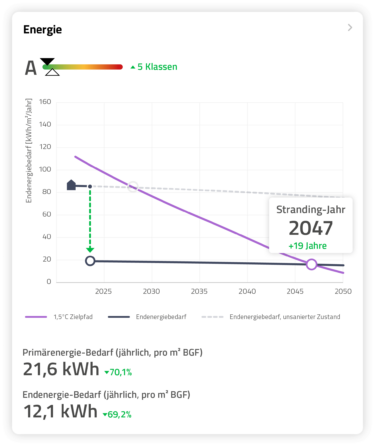
Comprehensive energetic evaluation
- Primary energy demand
- Final energy demand – incl. breakdown according to heating, cooling, ventilation, hot water and lighting
- specific transmission heat loss
- Energy consumption
- Income from photovoltaics and solar thermal energy
- CO₂ emissions and gray CO₂
The key figures are determined on the basis of dynamic full-year simulations and balancing according to DIN 18599.
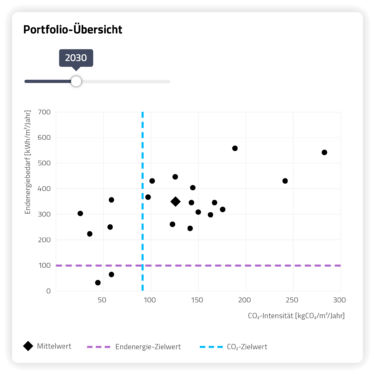
Evaluation of the overall portfolio
- Combine multiple objects into one portfolio
- Consider deviations of all buildings from EU target values for a given year.
- Visualize improvements from your planned remediation activities at the portfolio level
- Keeping an eye on total remediation costs for the entire portfolio
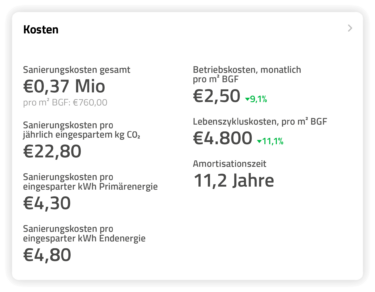
Detailed quantity take-offs and cost calculations
- Detailed quantity takeoff from the 3D model for each generated rehabilitation variant
- Renovation costs according to DIN 276
- Operating costs according to DIN 18960
- Life cycle costs according to DGNB
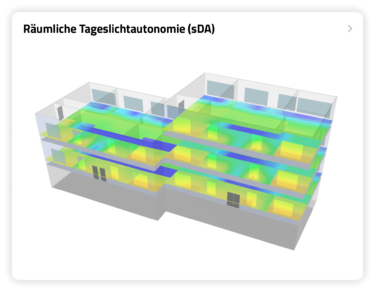
Keeping an eye on indoor comfort
- Daylight comfort according to WELL Standard, LEED and DGNB
- Air quality according to Eurofins, WELL and LEED
- Thermal comfort according to ANSI/ASHRAE 55:2010 and EN ISO 7730

“The portfolio analysis with Metabuild is the best way to quickly identify opportunities to add value to your portfolio – with amazing accuracy.”
Marc Heinz
CEO
vrame Consult GmbH
Metabuild is simple.

Let’s talk about your portfolio.
Phone: +49 30 692 00 14 11
E-mail: info@metabuild.de
Or write to us via our contact form:
Frequently asked questions
-
How does the collaboration with Metabuild work?
The collaboration usually starts with a kickoff meeting in which we discuss portfolio optimization and your individual goals. We also find out which services you would like to cover in-house to make our collaboration as efficient as possible.
Thanks to our innovative platform, you have access to comprehensive analysis tools with intuitive result dashboards and can track the progress of your projects and portfolio evaluations.
-
We already use an ESG platform or have already done portfolio analysis. Why should we use Metabuild?
We are often asked by larger portfolio holders what business reasons can be used to argue for the use of Metabuild, especially since sometimes partial solutions are already in use and a platform switch needs to be justified.
Below we list all the requirements that a successful portfolio analysis must meet. All points are fulfilled by Metabuild.
a) Model-based analyses: the current energy status and renovation potentials should be determined on the basis of calculated requirements and not merely on the basis of measured consumption data.
b) Variant studies: In order to obtain a good overview of the refurbishment potentials in the portfolio, at least 20, ideally about 500 refurbishment scenarios per building should be investigated. This is the only way to determine which measures are likely to be most efficient in terms of costs and sustainability.
c) Cost calculations based on quantity models: All renovation scenarios should be based on a quantity model with current cost data. The cost calculations should be issued in accordance with DIN 276 to enable comparability and evaluation of the renovation scenarios.
d) Dynamic year-round simulations: Dynamic year-round simulations are required to realistically represent the interactions of location, architecture, urban context, use, building envelope, HVAC, and energy supply. Balance sheet methods (DIN 18599) do not provide a sufficiently accurate representation of reality, resulting in the risk of incorrect investment decisions.
e) Consideration of gray CO₂: In addition to the expected CO₂ emissions from ongoing operation, gray CO₂ should also be determined for each refurbishment scenario investigated. In this way, foreseeable regulatory requirements can already be taken into account and more holistic remediation decisions can be made.
f) Platform + interface: In order to enable a rapid and maximally transparent analysis of the portfolio, the creation of the building models and the performance of the energy analyses should be platform- and server-based. The storage of building information (insulation, glazing, heating systems, energy sources, etc.) should be enabled via an Excel interface.
g) Model availability + future enrichment of models: All created building models should be made available to the customer in an open exchange format for further use. The customer should be enabled to achieve a higher level of detail in subsequent follow-up analyses by enriching the building models.
-
What asset classes and project sizes can Metabuild be used for?
Metabuild can be used for all asset classes: Residential, Office, Retail & Commercial, Logistics, Industrial, Hotel & Hospitality, etc.
Even complex mixed-use and individual occupancy plans can be mapped and accurately evaluated in Metabuild’s simulations.
Metabuild can be used for projects of any size. For neighborhoods or building ensembles, analyses are performed at the building level and the results are then aggregated. Shading effects between buildings and by neighbouring buildings are taken into account.


